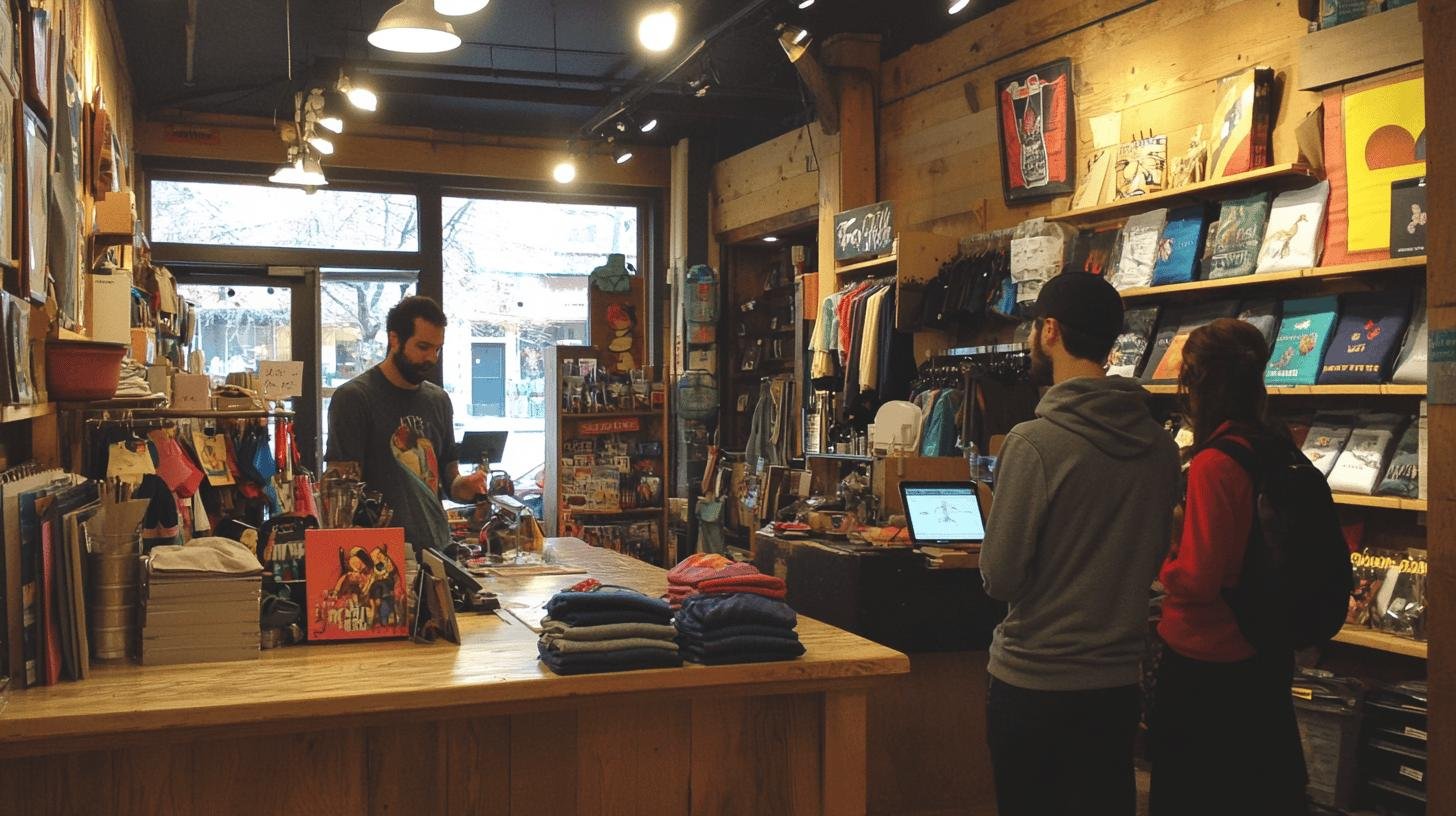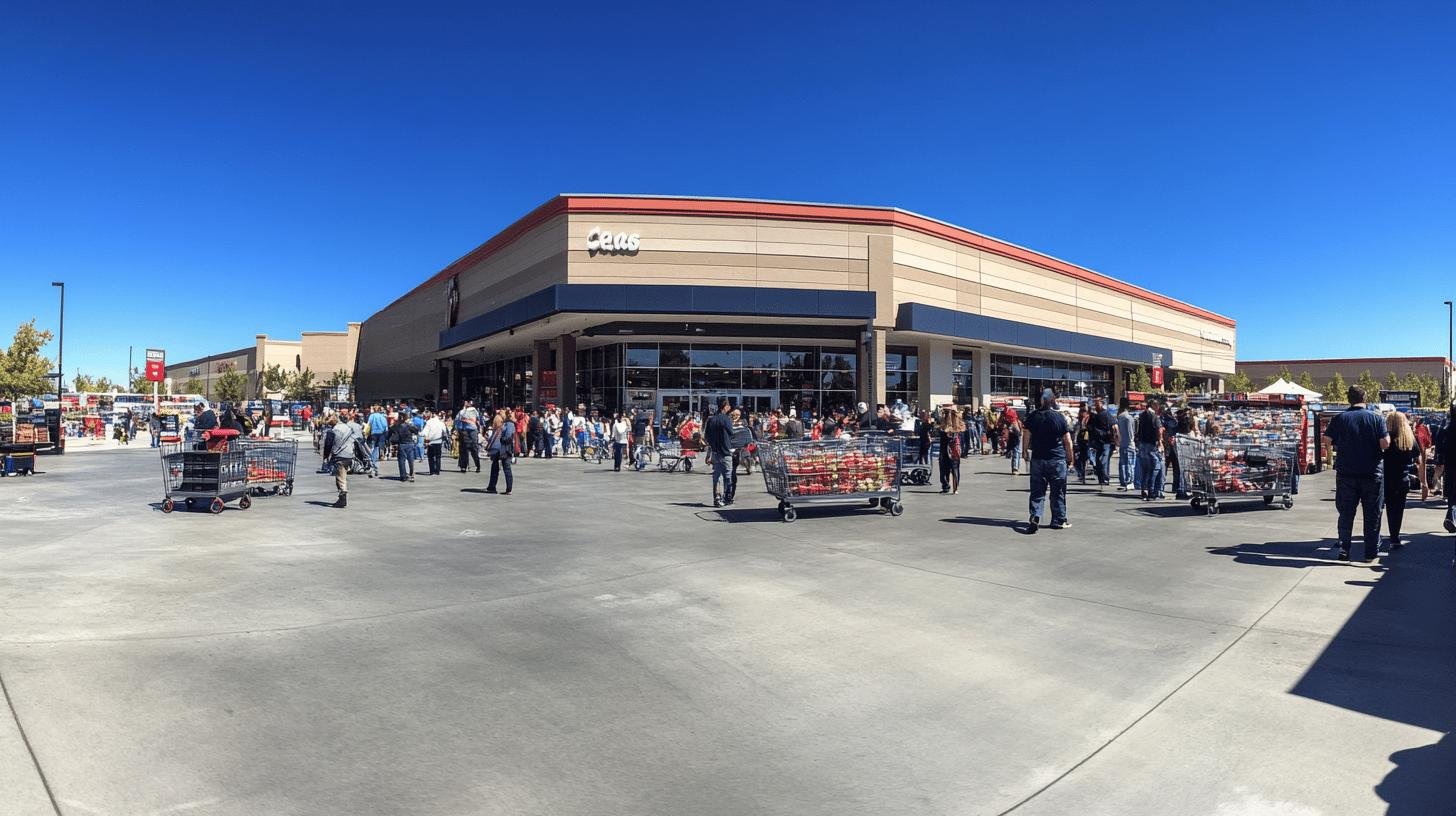TL;DR:
- Definition: Brick-and-mortar businesses have physical locations for customer interaction.
- Advantages: In-person service, immediate product availability, tangible experiences, enhanced brand loyalty.
- Disadvantages: High operational costs, geographical limitations, competition from e-commerce.
- Consumer Preference: 90% prefer physical stores for immediate access and tactile experiences.
- Successful Example: Costco uses membership benefits and online integration to boost loyalty.
- Challenges: High costs, limited local reach, competition from e-commerce.
- Possible Solutions: Streamline operations, expand digital presence, enhance in-store experiences.
- Future Trends: Technology integration, omnichannel strategies, personalized experiences, sustainable practices, and community engagement.
Is the brick-and-mortar business model a relic of the past, or does it still have a place in today’s digital market? While e-commerce has reshaped how we shop, physical stores offer something unique that online platforms can’t replicate.
This article explores the enduring appeal of brick-and-mortar stores and why they remain a staple in retail. Discover the distinct advantages, challenges, and the future of these traditional business models, and see how they stack up against online giants.
Can brick-and-mortar shops be the key to building a reliable, woke-free shopping experience? Let’s find out.
Understanding the Brick-and-Mortar Business Model
Brick-and-mortar businesses have physical locations, like stores or offices, where customers can visit to browse and buy products or services. Before the internet was popular, this was how most people shopped. These businesses rely on face-to-face interactions, helping to build customer relationships. Historically, they have been key players in local economies, providing jobs and serving as community hubs.
- In-person service: Customers can directly interact with staff.
- Physical inventory: Goods are stored on-site, ready for immediate purchase.
- Geographical limitations: Typically serve customers from nearby areas.
- Tangible experiences: Shoppers can see and touch products before buying.
- Immediate product availability: No need to wait for delivery; customers take items home right away.
Unlike online platforms, brick-and-mortar stores thrive on physical presence and personal interactions. While e-commerce, like Amazon, offers convenience, it lacks the personal touch. Physical stores allow customers to experience products firsthand, which can lead to more informed buying decisions. Though online shopping emphasizes digital ease, physical stores offer a tactile experience that can’t be mimicked online.
Advantages and Disadvantages of Brick-and-Mortar Stores

Brick-and-mortar stores offer a unique customer experience that online platforms can’t match. In-person interaction lets businesses build a personal touch, encouraging brand loyalty. Shoppers can examine products firsthand, making more informed decisions and increasing impulse buys. Immediate product availability is also a benefit, as customers can take items home without a wait.
However, running brick-and-mortar stores involves significant costs, including rent, utilities, staffing, and maintenance. These expenses can add up quickly, making it more costly than e-commerce operations. The need for physical space also limits their geographical reach. These factors can be major hurdles for businesses trying to keep costs manageable while maintaining competitiveness.
| Advantages | Disadvantages |
|---|---|
| Physical customer interaction | High rent and utility costs |
| Immediate product availability | Staffing expenses |
| Enhanced brand loyalty | Maintenance and operational costs |
| Tangible product experience | Geographical limitations |
These pros and cons impact the sustainability of brick-and-mortar stores. While personal shopping can build loyalty and encourage repeat visits, high costs and limited reach are challenges. Businesses must balance these factors to remain viable. Adapting strategies, like integrating digital solutions or enhancing in-store operations, can help overcome some challenges and ensure long-term success.
Brick-and-Mortar vs. Online Businesses
Consumer preferences play a key role in the ongoing battle between brick-and-mortar and online businesses. About 90% of shoppers prefer physical stores for instant product availability. This preference is due to the ability to see, touch, and try products. In-person shopping also encourages impulse purchases, often made when customers physically interact with items. Online shopping, despite its convenience, struggles with this aspect.
Both models have strengths. Brick-and-mortar stores provide a tactile experience. Customers enjoy personalized service and can examine products physically. This builds stronger loyalty and trust. On the other hand, online shopping offers unmatched convenience. Shoppers can browse from anywhere, anytime, with a wider range of products and competitive pricing due to lower costs.
- Reach: Brick-and-mortar serves local areas; online reaches a global audience.
- Cost: Physical stores face higher overhead; online businesses often have lower costs.
- Customer interaction: In-person at brick-and-mortar; virtual through online platforms.
- Product experience: Tactile in physical stores; online relies on images/descriptions.
- Availability: Immediate in stores; delayed due to delivery online.
- Impulse buys: Encouraged by in-store displays; less frequent online.
Hybrid approaches like click-and-collect blend both worlds. Customers order online and pick up in-store, offering the convenience of e-commerce with the immediate access of brick-and-mortar. This strategy meets diverse consumer needs, ensuring businesses capitalize on the benefits each model offers. As shopping habits evolve, integrating these approaches can provide an edge and improve customer satisfaction.
Successful Examples of Brick-and-Mortar Businesses

Costco Wholesale is a prime example of a successful brick-and-mortar business. Their model focuses on membership benefits, promoting loyalty among customers. This strategy drives more store visits and enhances the shopping experience. Costco effectively integrates online sales with in-store pickup, combining e-commerce convenience with a tactile experience. With a vast inventory and competitive pricing, Costco appeals to a broad customer base, highlighting brick-and-mortar’s enduring appeal.
- Membership benefits: Encourages repeat visits and boosts customer loyalty.
- Localized marketing: Tailors promotions to local community needs.
- In-store experiences: Provides a shopping experience unmatched online.
- Online integration: Combines e-commerce and in-store pickup for convenience.
- Competitive pricing: Attracts a diverse customer base with valuable offerings.
These strategies can serve as a blueprint for smaller businesses aiming to succeed in competitive markets. By leveraging membership programs, they can build a loyal customer base. Localized marketing resonates with community values, and unique in-store experiences set them apart from digital-only competitors. Integrating online elements like curbside pickup can enhance convenience without sacrificing the benefits of a physical presence. Through these approaches, small businesses can achieve success while maintaining their core principles.
Challenges Facing Brick-and-Mortar Stores
What challenges do brick-and-mortar stores face today? Mainly, they deal with financial strains and geographical limitations. Operating such businesses means managing high overhead costs like rent, utilities, and wages. These expenses can quickly add up, making it harder to compete with online businesses that have lower operational costs. Also, brick-and-mortar stores are confined to serving local customers, restricting growth opportunities unlike e-commerce platforms that can target consumers worldwide.
E-commerce poses significant competition. How do brick-and-mortar stores compete with online businesses? Digital platforms offer unmatched convenience and often more competitive pricing due to lower overheads. This pressures physical stores to find ways to attract and retain customers. The rise of e-commerce has shifted consumer expectations towards quick, hassle-free shopping, which brick-and-mortar must match through personalized service and unique experiences.
| Challenges | Possible Solutions |
| High operational costs | Streamline expenses; optimize staff usage |
| Geographical limitations | Expand digital presence with online sales |
| E-commerce competition | Offer in-store experiences and loyalty perks |
| Changing customer behavior | Implement hybrid approaches (e.g., click-and-collect) |
To ensure longevity, brick-and-mortar stores must innovate and adapt. They can streamline operations and lower costs, expand digital presence, and offer hybrid services like home delivery and curbside pickup. Enhancing the in-store experience through personalized service and loyalty programs can help stand out from online rivals. By embracing these strategies, physical retail can remain relevant in a digital world.
The Future of Brick-and-Mortar Retail

The future of brick-and-mortar retail depends on technology and digital tool integration. As 63% of shopping starts online, traditional stores must use omnichannel strategies to stay relevant. This involves creating seamless online and offline shopping experiences. Brick-and-mortar stores can use virtual reality for demos or data analytics for personalized experiences. By adopting these tools, physical stores can offer convenience and tactile engagement that e-commerce can’t fully replicate.
- In-store technology: Enhances shopping with virtual and augmented reality.
- Omnichannel retailing: Blends online and offline shopping for seamless experiences.
- Personalized shopping experiences: Uses data analytics to tailor offerings.
- Sustainable practices: Focuses on eco-friendly operations and products.
- Community engagement: Builds loyalty through local events and partnerships.
Small businesses can use these trends to carve a niche. By integrating digital tools, they enhance customer engagement and streamline operations. Embracing sustainable practices attracts eco-conscious customers, while community engagement builds loyalty. These strategies help small businesses adapt to digital changes while maintaining core values.
Final Words
Brick-and-mortar businesses continue to play a vital role in consumer shopping experiences, offering tangible benefits like personal interaction and immediate product access. While faced with challenges such as high costs and geographical limits, these stores adapt by blending digital and physical elements.
Comparing brick and mortar business models with online platforms highlights consumer preferences and operational strengths of both. Success depends on balancing these aspects, as shown by companies like Costco.
Embracing technological advances will help small businesses compete effectively, promising a resilient future in retail.
FAQ
What is a brick-and-mortar business?
A brick-and-mortar business operates through physical locations like stores, where customers can browse and purchase products in person.
How does a brick-and-mortar business differ from an online store?
Brick-and-mortar businesses offer in-person shopping, while online stores provide the convenience of shopping from anywhere, with potentially lower operational costs.
What are some successful brick-and-mortar business strategies?
Successful strategies include membership programs, competitive pricing, and blending online shopping with in-store experiences.
What challenges do brick-and-mortar stores face?
High operating costs, geographical limits, and competition from online businesses are key challenges. Solutions include embracing technology and enhancing the in-store experience.
What is the future of brick-and-mortar retail?
The future lies in combining digital tools with traditional retail, offering customers both convenience and tactile experiences.

